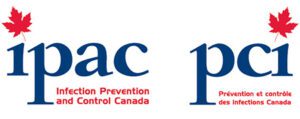18 Important Mold Facts
18 Mold Related Facts you should be aware of
Primary Mold Fact #1: You have 24 to 48 Hours to address moisture in your home before mold starts to grow!
Mold needs three things before it will start to grow in your home;
- Time: It needs 24 – 48 hours before it will start to grow and release mold spores. It is very efficient at surviving and expanding in your home.
- Moisture: Moisture is a requirement for mold to grow. Moisture in the air, moisture from a leak, moisture from a poorly waterproofed or old foundation, moisture from anywhere is necessary.
- Food Source: Mold needs organic material to grow. Wood products such as paper, cardboard and wallpaper. Leather, fabrics like drapes and upholstery, grout, painted walls or oil-based wood stains, cement, plaster and drywall, acoustic ceiling tiles, insulation materials and carpet.
With enough time, moisture and a food source mold will begin growing within 24 to 48 hours. This is the reason that it is so important keep moisture, such as leaks, relative humidity and other moisture sources fixed and under control!
Mold Fact # 2 – Mold can reduce the value of your property
Mold Fact #3 – A moisture content of over 19% for approximately 24-48 hours is required for significant mold growth to occur on lumber and/or wood structural building components. Lumber surface mold growth occurs most on species of wood when the moisture content by weight is between 20 and 28 percent.
Mold Fact #4 – Wood decay fungus, on the other hand, requires much higher moisture levels to grow, as the wood moisture content must be above the fiber saturation point, (i.e., at least 28 percent by weight, varying for species), for more than one week.
Mold Fact #5 – A few potential sources of unwanted moisture in buildings are: 1) improperly maintained A/C systems that can create excessive condensation, 2) plumbing leaks, 3) gaps in flashing, roofs, siding or masonry, 4) poorly sealed windows, 5) porous slabs and foundations, 6) inadequate drainage, 7) faulty roof drains and downspouts, and 8) poor ventilation and / or air circulation combined with high indoor humidity – from showers, cooking or other activities can result in condensation that promotes mold growth.
Mold Fact #6 – During both the manufacturing and construction process, mold can occur naturally on structural wood components; normally this is due to warm temperatures and the presence of moisture in or on the wood for a prolonged period of time. Surface molds, which come from a variety of sources including airbourne spores, feed off the sugars and starches that are readily available in wood.
Mold Fact #7 – Mold on the surface of lumber does not cause rotting or otherwise affect the strength of wood framing. Mold is a symptom of high moisture which, if allowed to exist for prolonged periods of time, can be damaging to any structure and will cause wood to decay.
Mold Fact #8 – According to the Western Wood Products Association, in research conducted by the Oregon State University, none of the 45 species that formed on samples of Douglas Fir lumber were Stachybotrys, ((a particularly harmful mold species). This type of mold is typically found growing on chronically wet building materials such as lumber wood panels, drywall backing, insulation and ceiling tiles. The study indicated a differing species of harmful mold, Aspergillus, was the variety of mold species that was found most often on lumber of this type.
Mold Fact #9 – Reasonable amounts of wetting can be endured during the framing process. Assuming the structural components are not exposed to further wetting from rain, framing will dry out under dry outdoor weather conditions after the structure is put under roof, sheathed, sided and roughed-in. Such drying must occur before the framing is closed in or covered up with insulation and drywall. Closing in is considered the point at which structural components are covered up with additional materials that restrict their ability to dry.
Mold Fact #10 – Before closing in the structure, it is essential to allow wet building components a chance to dry. Good construction planning allows construction projects to be sequenced to protect all moisture-sensitive building materials, including structural components, from excessive wetting that could lead to mold.
Mold Fact #11 – Drying lumber, while reducing the likelihood of mold formation, does not guarantee wood will remain free of mold. Even if dried, lumber exposed to moisture will support mold growth.
Mold Fact #12 – Homes with exposed dirt crawlspaces and basements tend to have more airborne mold spores than homes without.
Mold Fact #13– Active mold growth, besides being hazardous to human health, indicates an underlying moisture problem that should be corrected. Moisture also permits the growth of bacteria and dust mites that may cause illness by themselves or in concert with molds. Mold has developed, over time, to become a very efficient and aggressive form of fungus. It will continue to grow as long as there is a food source, moisture and time and will do so until either runs out. It will not stop.
Mold Fact #14 – One of the ways that we stop mold is by removing the source of moisture and food. The other is by removing the areas of dried mold that remain in the interior cavities of walls / ceilings / crawlspaces and attics. We identify where the mold is and determine the most effective route to take that will eliminate the issues in your home. The only way to stop mold is to address the moisture source to prevent future mold growth and then remove the contaminated porous materials. Effective, long lasting mold remediation is based upon identifying the source of contamination and ensuring it is fixed. Failing to fix the underlying causes of the mold and effectively removing the mold will lead to reduced property values caused by structural damage as the mold continues to feed on the home.
Mold Fact # 15 – Mold is both a helpful and harmful organism. It has found and occupies a certain niche in nature and aids in the process of breaking down more complex proteins into simpler ones.
Mold Fact #16 – In today’s ever present drive to become more efficient to save money our homes have become much more energy-efficient. This usually means homes that have become “tighter” which slow or reduce ventilation. This provides an opportunity for significant mold growth inside the home.
Mold Fact # 17 – The season that the home was built is also a factor as to whether or not you can expect potential mold issues. For instance, if the home was built during a period when there was lots of rain and the foundation was not allowed to completely dry before installing the insulation and vapor barrier, then moisture could be trapped behind the walls.
Mold Fact # 18 – Today’s home developers constantly seek ways of completing projects quickly so they can get off the job site. We have seen wet lumber not having adequate time to dry out causing mold to grow. While not structurally harmful this mold remains inside to home until it manifests itself in another area of the home where moisture and a food source become available. And because these types of issues are hidden from the homeowner, you are left with the cost.


Maple Leaf Mold Inc. is a certified mold / asbestos removal and biological disinfection / air analysis company located in Toronto that uses certified IICRC technicians for all testing and remediation projects.
We are a professionally licensed firm experienced in testing, verifying and removing Mold / Asbestos / Lead and other environmental contaminants as well as providing disinfection services to control and kill biological contaminants.
Call 416-254-7256 to talk with us about your issue anytime.






